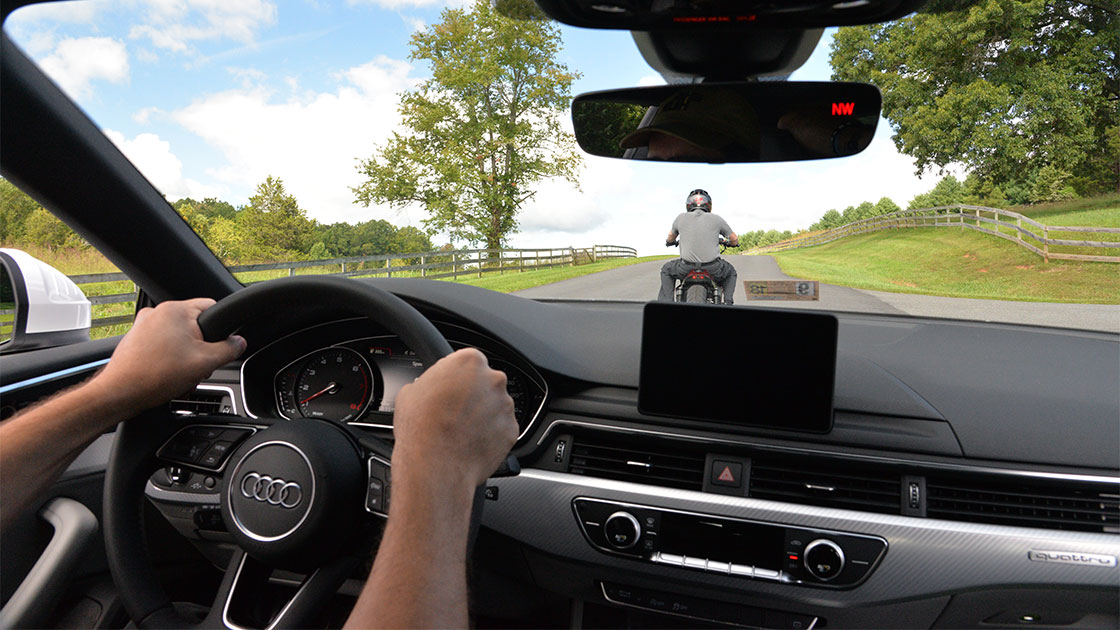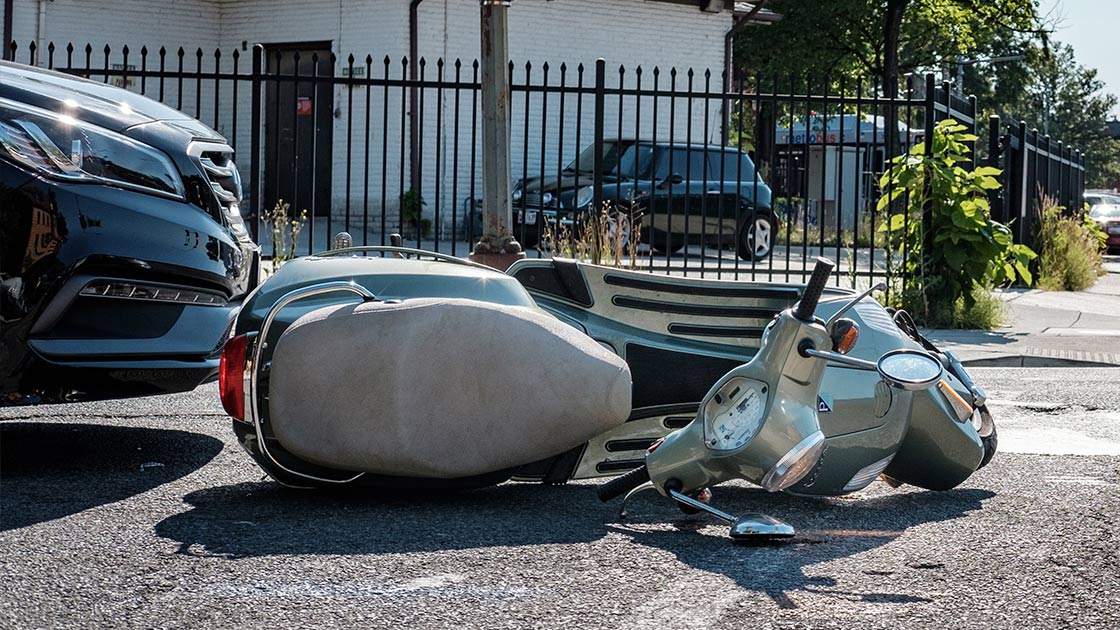Helping vehicles 'see' motorcyclists could cut crashes
October 19, 2017

More than 8,000 two-vehicle crashes with motorcycles could be prevented or mitigated each year by equipping passenger vehicles with front crash prevention, lane maintenance and blind spot detection systems designed to detect motorcycles, a new IIHS study estimates.
Cars, pickups and SUVs are increasingly available with crash avoidance features, which use cameras and sensors to monitor the driving environment and warn the driver or intervene if a possible collision is detected. IIHS and HLDI research has found benefits for front crash prevention, lane departure warning and blind spot detection (see "Front crash prevention slashes police-reported rear-end crashes," Jan. 28, 2016, and "Lane departure warning, blind spot detection help drivers avoid trouble," Aug. 23, 2017).
Not all front crash prevention and blind spot detection systems are designed to detect motorcyclists. Since conspicuity is a factor cited in many crashes between a passenger vehicle and motorcycle, giving drivers another set of eyes to watch for potential conflicts with less-visible road users could help to save lives and prevent injuries.
To estimate the potential benefits for motorcyclists of passenger vehicle crash avoidance technology, Eric Teoh, the Institute's senior statistician, evaluated two-vehicle crashes between a motorcycle and a passenger vehicle that occurred on U.S. roads during 2011-15. Teoh looked for crashes relevant to three types of crash avoidance technology: front crash prevention, which includes forward collision warning and automatic emergency braking; lane maintenance, which includes lane departure warning and lane-keeping support; and blind spot detection. He used data from the federal government's Fatality Analysis Reporting System and the National Automotive Sampling System — General Estimates System.
Eighty-six percent of the motorcycle crashes involved an injury or fatality. The crashes largely fell into two similar-size categories, regardless of severity: single-vehicle or two-vehicle involving a passenger vehicle. Most of the two-vehicle crashes relevant to front crash prevention involved the front of a passenger vehicle rear-ending a motorcycle. Crashes in which a motorcycle turned into the path of an oncoming passenger vehicle or where a motorcycle traveling in the same direction as a passenger vehicle turned across its path also were counted but didn't happen as frequently as rear-enders.
Teoh estimated that front crash prevention would have been relevant to 4 percent of fatal crashes, 10 percent of nonfatal crashes with injuries and 13 percent of police-reported crashes during the period.
"These crashes represent a major opportunity for front crash prevention systems on passenger vehicles," Teoh says. "As manufacturers refine systems and design future ones, they should include the ability to reliably detect motorcyclists, along with other road users."
Lane departure warning and lane-keeping systems don't rely on detecting other vehicles, only lane markings, so they already can benefit motorcyclists. A sticking point is getting drivers to leave the systems on (see "Lane maintenance systems still a turnoff for many drivers," June 22, 2017).
Crashes relevant to lane maintenance accounted for 4 percent of fatal crashes, 3 percent of nonfatal injury crashes and 4 percent of all police-reported crashes studied. These included head-on and sideswipe crashes in which the passenger vehicle unintentionally left its lane. Same-direction sideswipe crashes in which the passenger vehicle deliberately changed lanes were relevant to blind spot detection and included 1 percent of fatal crashes, 6 percent of nonfatal injury crashes and 6 percent of police-reported crashes.

The three technologies combined have the potential to prevent an estimated 10 percent of fatal two-vehicle motorcycle crashes, 19 percent of nonfatal crashes with injuries and 23 percent of police-reported crashes. Since fewer than half of all motorcycle crashes involve collisions with a passenger vehicle, the technologies have the potential to avoid 4 percent of all fatal motorcycle crashes and 10 percent of all police-reported motorcycle crashes.
Teoh also examined crash types that none of the three current passenger-vehicle crash avoidance technologies would have prevented. Thirty-six percent of fatal two-vehicle crashes, 21 percent of nonfatal injury crashes and 19 percent of police-reported crashes involved a passenger vehicle turning left in front of an oncoming motorcycle.
"Developing or adapting systems to detect an oncoming motorcycle and brake to avoid a left-turn crash would more than quadruple the number of fatal crashes potentially prevented," Teoh says. "Some manufacturers are starting to address this crash configuration."
For motorcycles specifically, developing and equipping them with front crash prevention, lane maintenance and other technologies also would reduce crashes. In rear-end crashes of all severities, the motorcycle was more likely to strike the passenger vehicle than the passenger vehicle was to hit the motorcycle, Teoh found. Among crashes involving two vehicles initially traveling in opposite directions, the motorcycle strayed from its lane more often than the passenger vehicle. Two-thirds of fatal crashes of this type happened as the bike negotiated a curve, compared with only about a third of crashes where the passenger vehicle strayed from its lane.
Antilock braking systems (ABS) are a crash avoidance technology available on motorcycles now. ABS reduces the rate of fatal crashes by 31 percent, compared with the same motorcycles that don't have ABS. Some systems are optimized for curves to give riders more stability in emergency situations.
Even if crash avoidance technology is fully realized, some motorcycle crashes still will occur.
"Crash avoidance technology doesn't negate the need for other proven motorcycle safety countermeasures, such as proper helmets and protective gear and universal helmet laws," Teoh points out.